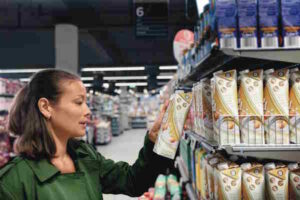Sustainability is more than recycling: The importance of understanding product lifecycle
(BPT) – Looking for sustainable packaging when shopping is an important step for reducing your environmental footprint. For many people, this means seeking packaging that is recyclable. While that’s an important element of sustainable packaging, it’s only one part.
You can make a bigger impact and support the well-being of the earth, as well as the people and communities involved in producing products, by understanding a product’s full lifecycle. So, what else should you consider when comparing packaging?
1. Material sourcing
Beyond what materials are used, it’s important to ask where the materials come from and how they are sourced. How can you know material sourcing is done responsibly? Some brands go through extensive evaluations to be certified by reputable third-party organizations. Here are a couple of labels you can look for and feel confident the packaging you are purchasing is responsibly sourced:
Forest Stewardship Council® (FSC®) label: FSC® is an independent, non-governmental forest certification standard. When you purchase FSC®-labeled products, you’re helping forests and the people that rely on them thrive by supporting zero deforestation, fair wage and work environment, community rights and protection of plant and animal species.
Bonsucro Chain of Custody label: The Bonsucro Chain of Custody Standard relates to the supply of sugarcane, including all stages from feedstock production up to consumption. This certification provides assurance that sustainability claims can be tracked along the supply chain, including responsible sourcing and ethical trading of sugarcane, which can be used to produce a plant-based plastic material in place of traditional fossil-fuel based plastics.
2. Renewable, plant-based materials
Renewable plant-based materials are better for the environment because they can be replenished over time and enable a move away from fossil fuel–based materials. Plus, you can feel good that renewable resources are natural resources, which will replenish the portion depleted through consumption. Examples of renewable materials you are likely to see on a store shelf include:
Paper from responsibly managed forests: All Tetra Pak® cartons use paperboard from trees sourced from FSC®-certified forests and other controlled sources. On average, a Tetra Pak carton consists of 70% paperboard, a renewable plant-based material.
Plastics made from plant-based materials: Plant-based plastics look and perform the exact same as their fossil fuel–based alternative. Look for the Bonsucro logo, which demonstrates responsible sugarcane management.
3. Protection of the product
Good packaging helps protect the product, which is particularly important for foods and beverages. This helps ensure you don’t get sick and helps reduce food waste. Globally, food waste is responsible for 8% of greenhouse gas emissions, according to the Food and Agriculture Organization of the United Nations.
When shopping, look for packaging that helps to extend shelf life without a negative impact on nutrition. For example, foods and drinks in shelf-stable cartons from Tetra Pak are treated using UHT (ultra heat treatment). When combined with the company’s shelf-stable packaging, products ranging from dairy milk to chicken broth are safe and delicious for long periods of time without the need for additives, preservatives or refrigeration before opening.
Bonus: In addition to minimizing food waste, shelf-stable packaging does not require refrigeration. This minimizes energy consumption that would otherwise be used to support a refrigerated distribution chain.
4. Recyclability
Once a package has fulfilled its purpose, what happens at the end of life? Ideally, it can be recycled. When shopping, look for a recycling logo on the package.
Many packages are considered widely recyclable and can be placed in your curbside bin. Keep in mind, though, some packages are not yet recyclable everywhere, so you may see a recycling logo with additional qualifications such as: Recyclable where facilities exist, or, with specific instructions on where to return the item to be recycled.
To prevent litter, reattach caps or push straws into a package before you place them in the recycling bin.
5. Carbon impact
In addition to understanding a product’s lifecycle, some package changes can reduce the overall carbon footprint. For example, the carbon emissions of a package with renewable, plant-based plastics are less than the same package with plastic made from traditional fossil fuel–based materials.
Check the packaging or a brand’s website for information about the carbon footprint of the package. For example, Carbon Trust™ offers a “Reducing CO2 Packaging” certification for brands to include on-pack that demonstrates a move toward a package with a lower carbon impact.
Understanding a product’s lifecycle can help you make more informed shopping decisions. Learn more at Tetrapak.com/en-us/Sustainability.

